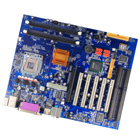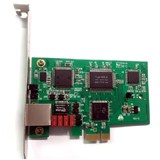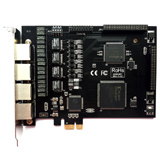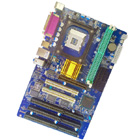Key Differences Between ISA and PCI Slots
1. Historical Context
ISA (Industry Standard Architecture):
Originated in 1981 with IBM's PC/XT systems, later expanded to 16-bit in 1984 for the PC/AT27.
Dominated the 1980s–1990s as the primary interface for peripherals like sound cards and modems16.
Gradually phased out after PCI's introduction in the mid-1990s67.
PCI (Peripheral Component Interconnect):
Developed by Intel in 1993 as a successor to ISA and VESA Local Bus38.
Became mainstream in consumer PCs with the release of Pentium processors in 1994
2. Physical Design
ISA:
Black-colored, long slots (36/68 pins) located at the motherboard's bottom edge15.
Occupies significant space due to large connector size47.
PCI:
White-colored, shorter slots positioned above ISA slots (on legacy boards)8.
Compact design optimized for modern motherboard layouts38.
3 . Application Scenarios
ISA Legacy Use:
Still utilized in industrial/military systems requiring backward compatibility26.
Limited modern support (requires custom BIOS/drivers)14.
PCI Modern Use:
Supports high-speed devices like Gigabit Ethernet cards, USB 3.0 controllers, and RAID cards8.
Fully compatible with plug-and-play (PnP) standards38.
4. Obsolescence Factors
ISA's limitations (low bandwidth, manual configuration) made it unsuitable for 32/64-bit CPUs and multimedia applications37.
PCI's shared bus architecture and higher efficiency accelerated its adoption in consumer and enterprise hardware28.
For hardware enthusiasts, legacy ISA devices can sometimes be adapted via PCI-to-ISA bridge chips or specialized industrial motherboards
 See
also
See
also
-ISDN BRI and ISDN PRI Services
-FXO vs FXS
-Global
System for Mobile Communications
-About VoIP
-SIP:Session Initiation Protocol
-List of commercial voice over IP
network providers
-Mobile VoIP
-FXS or FXO
-List of SIP softwares
-List of SIP software







